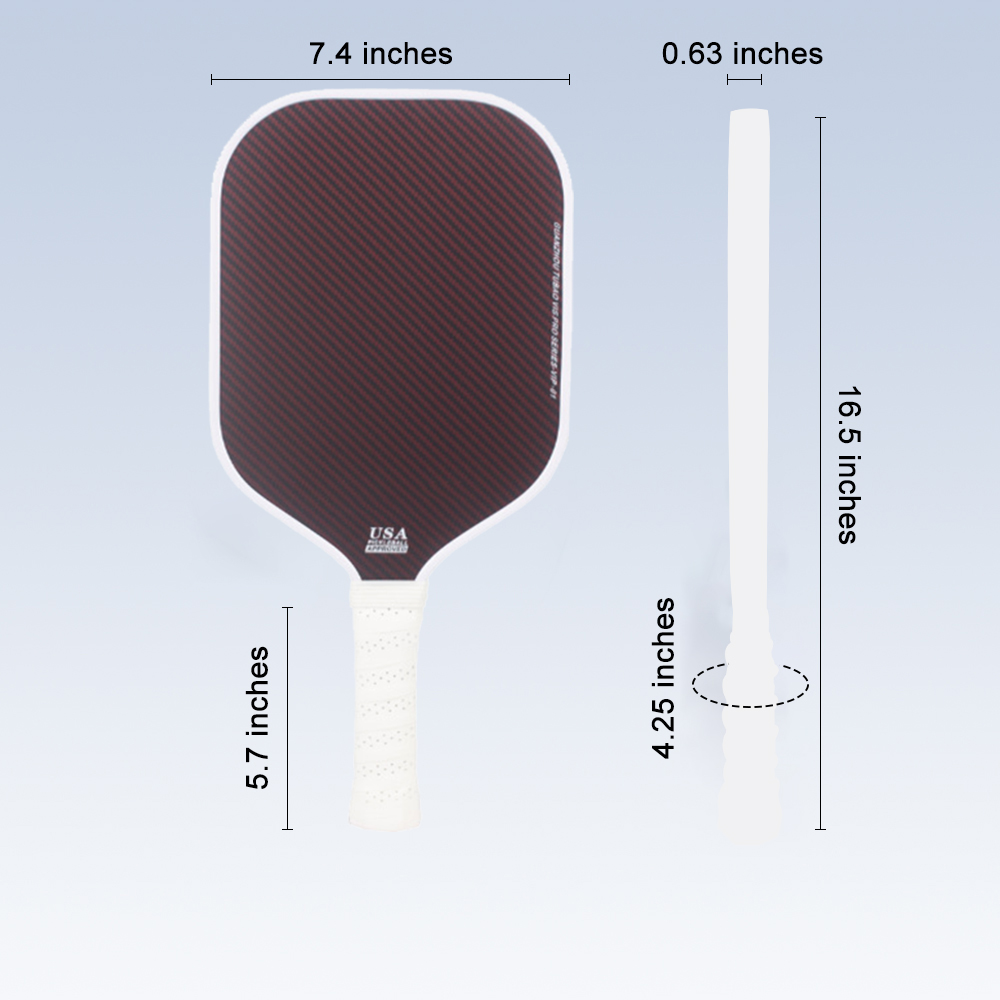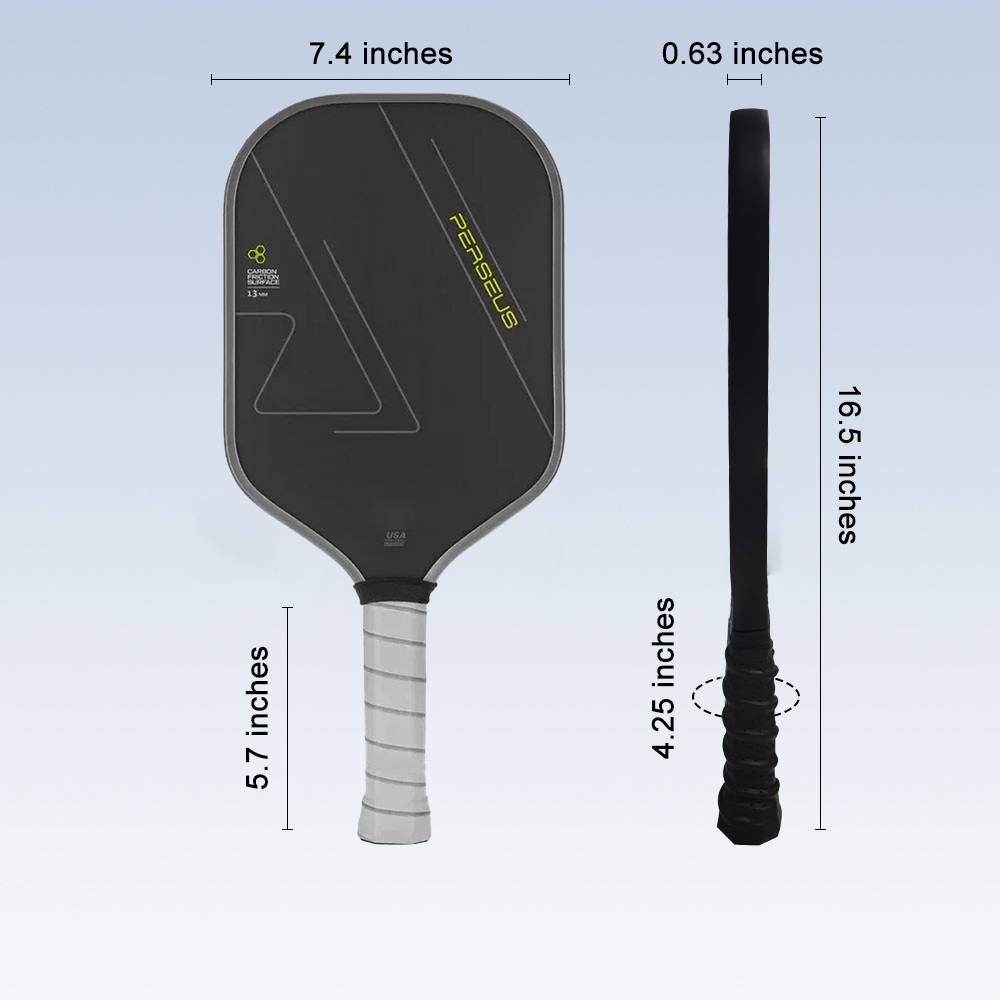
Introduction to Pickleball Paddles: Understanding Materials
In recent years, the popularity of pickleball has surged, drawing in enthusiasts from all walks of life. With its growing fanbase, the demand for high-quality pickleball paddles has risen. Understanding the materials used in these paddles is crucial for players looking to enhance their game. Two of the most talked-about materials are Kevlar and Carbon Fiber, each offering unique benefits.
When selecting a pickleball paddle, the choice of material can significantly impact performance, durability, and overall playing experience. Both Kevlar and Carbon Fiber are popular due to their strength and lightweight properties, but they serve different player needs. By examining the characteristics of each, players can make informed decisions about which paddle suits their style.
What are Kevlar Pickleball Paddles?
Kevlar, a synthetic fiber known for its high tensile strength, is widely used in various products, including pickleball paddles. This material is renowned for its ability to absorb shock and withstand impact, making it an excellent choice for players who prioritize durability. Kevlar paddles are often favored by players who prefer a paddle that offers a balance of power and control.
The construction of Kevlar pickleball paddles typically involves layering Kevlar fibers with a core material, such as polymer or Nomex. This combination allows for a lightweight paddle that doesn’t sacrifice strength. The result is a paddle that can endure rigorous play while providing players with the control needed to execute precise shots.
What are Carbon Fiber Pickleball Paddles?
Carbon Fiber is another advanced material used in the construction of pickleball paddles, known for its lightweight and robust characteristics. This material is often chosen by players seeking a paddle that offers enhanced speed and maneuverability. Carbon Fiber paddles are noted for their sleek design and high level of performance.
The manufacturing process of Carbon Fiber paddles involves weaving carbon fibers into a matrix that is then bonded to a core, typically made from materials such as foam or polymer. This creates a paddle that is not only lightweight but also incredibly strong, providing players with the ability to make quick, agile movements on the court.
Key Differences Between Kevlar and Carbon Fiber Pickleball Paddles
-
Weight and Balance: Kevlar paddles tend to be slightly heavier than their Carbon Fiber counterparts, which can affect swing speed and power. Players who prefer a heavier paddle may lean towards Kevlar, while those seeking quicker hand speed might opt for Carbon Fiber.
-
Durability: Kevlar is renowned for its durability and ability to withstand impact, making these paddles an excellent choice for players who prioritize longevity. On the other hand, while Carbon Fiber paddles offer exceptional performance, they may not be as durable as Kevlar, particularly in high-impact situations.
-
Feel and Control: Carbon Fiber paddles are often praised for their superior feel and control, providing players with the ability to execute delicate shots with precision. Kevlar paddles, while offering control, may not provide the same level of responsiveness and touch.
Performance Comparison: Kevlar vs Carbon Fiber Pickleball Paddles
Performance is a crucial factor for many players when selecting a pickleball paddle. Both Kevlar and Carbon Fiber paddles offer unique performance benefits, but the choice ultimately depends on a player’s individual style and preferences.
Kevlar paddles are known for providing a solid, stable feel during play. This stability can be particularly beneficial for players who rely on power and control, as the material absorbs shock well, allowing for consistent shot execution. However, the slightly heavier weight of Kevlar paddles may require more effort to generate speed and maneuverability.
In contrast, Carbon Fiber paddles are lauded for their quick response and lightweight nature. Players who favor fast-paced play and require swift reactions often gravitate towards Carbon Fiber. The material’s ability to offer excellent ball control makes it ideal for executing spin and finesse shots. However, the lighter weight may result in less power behind hits, which could be a drawback for some players.
Ultimately, the choice between Kevlar and Carbon Fiber paddles comes down to the player’s preferred balance of power, control, and speed. Testing different paddles and assessing their performance on the court can help players determine which material complements their game best.
Cost Analysis: Pricing of Kevlar and Carbon Fiber Paddles
Kevlar paddles generally fall within a moderate price range, offering a balance of affordability and durability. Their cost-effectiveness makes them an attractive option for players seeking a durable paddle without breaking the bank. The longevity of Kevlar paddles also adds to their value, as players can enjoy extended use without frequent replacements.
In comparison, Carbon Fiber paddles tend to be positioned at a higher price point. The advanced manufacturing process and premium performance characteristics of Carbon Fiber contribute to their increased cost. However, for players who prioritize speed, control, and a lightweight feel, the investment in a Carbon Fiber paddle can be justified by the enhanced playing experience.
Player Preferences: Who Should Choose Which Paddle?
Kevlar Paddles:
- Ideal for players who prioritize durability and resilience.
- Suited for those who prefer a slightly heavier paddle for increased power.
- Beneficial for players who engage in frequent, high-impact matches and need a paddle that can withstand wear and tear.
Carbon Fiber Paddles:
- Perfect for players who value speed and maneuverability.
- Recommended for those who seek enhanced control and precision in their shots.
- Suitable for players who prefer a lighter paddle for quick reactions and agile play.
Conclusion: Making the Right Choice for Your Pickleball Game
In the debate between Kevlar and Carbon Fiber pickleball paddles, the ultimate choice depends on individual preferences and playing needs. Both materials offer unique advantages, with Kevlar excelling in durability and Carbon Fiber providing superior speed and control.
By understanding the characteristics and performance differences of each material, players can make informed decisions that enhance their play. Whether prioritizing longevity or seeking a paddle with exceptional responsiveness, the right choice will align with personal goals and playing style.
As you consider your next pickleball paddle, weigh the benefits of Kevlar and Carbon Fiber based on your priorities. By doing so, you’ll make a decision that elevates your game and provides a more satisfying playing experience.


